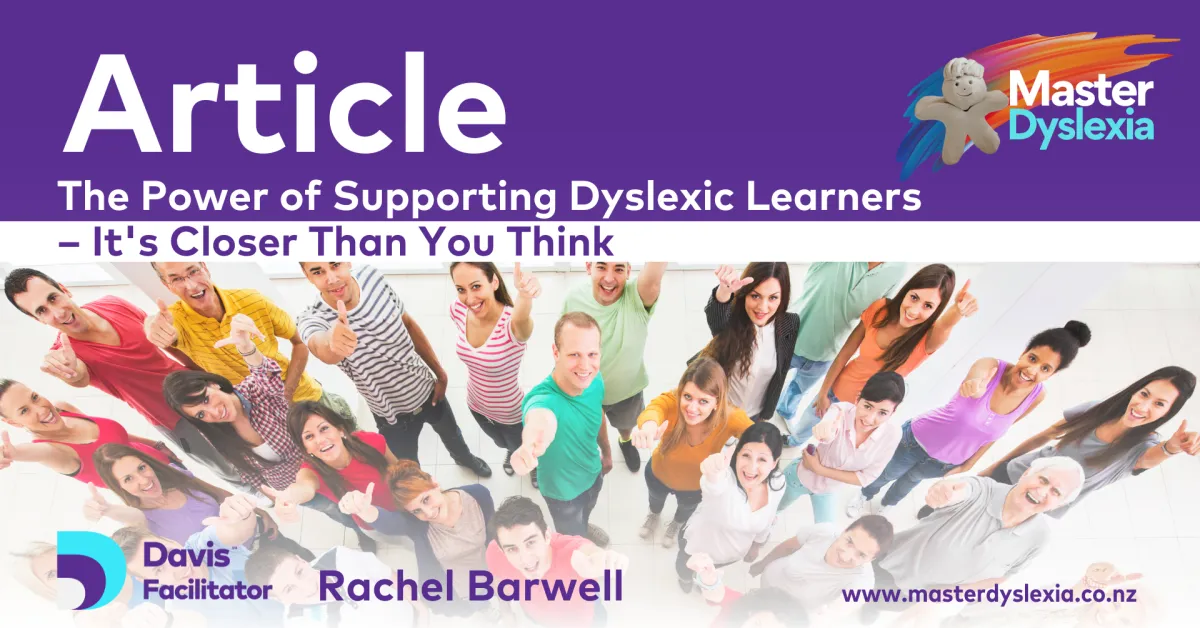
The Power of Supporting Dyslexic Learners – It's Closer Than You Think
Dyslexia is a learning difference that affects millions of children and adults worldwide. For dyslexic learners, the traditional methods of teaching reading and writing may not work. In fact, they can often lead to feelings of frustration, self-doubt, and academic failure. But what if the solution isn’t about teaching them more of the same - what if the solution is simply understanding how their brains process information differently?
For many dyslexic students, the path to literacy can seem daunting. They may have trouble with reading fluency, spelling, and writing, leading to feelings of isolation or inadequacy. However, the most encouraging part is that dyslexia is not a permanent barrier to success - it’s simply a different way of learning. With the right tools, strategies, and support, dyslexic learners can thrive and reach their full potential, just like their peers.
The First Step: Understanding the Dyslexic Brain
Understanding dyslexia is the key to unlocking a dyslexic student’s potential. Dyslexia is often misunderstood and misrepresented in traditional educational settings. The focus is frequently placed on rote memorization and phonics or sounds-based learning, which may not be effective for dyslexic learners. These students often process language differently, often relying more on visual and kinesthetic methods of learning rather than traditional sounds-based methods.
Dyslexia isn’t an indication of intelligence - it’s a neurological variation in how the brain processes written language. Dyslexic students may struggle with decoding words or understanding the connection between letters and sounds. However, their brains are often highly creative, and they excel in areas such as problem-solving, critical thinking, and visual-spatial awareness. These strengths can be leveraged to support their learning and overall academic achievement.
How Early Intervention Makes a Difference
One of the most powerful tools in supporting dyslexic students is early intervention. Research has shown that the sooner a dyslexic student receives the right support, the better their chances of academic success. With early identification, parents and educators can intervene with targeted strategies that meet the student’s needs.
Early intervention programs often incorporate a multi-sensory approach, combining sight, sound, and tactile activities to help dyslexic students connect letters to sounds and words to meanings. These methods may include modeling words with clay, using visual aids, or building word models to help students make sense of the written language in a way that suits their learning style.
Empowering Dyslexic Learners: Practical Strategies for Support
Support for dyslexic students doesn’t just happen in the classroom; it can also extend into the home environment. Parents can play a pivotal role in supporting their child’s literacy journey by creating an environment that embraces creativity, patience, and alternative learning methods.
Here are a few practical strategies to consider:
Use visual aids: Create flashcards with both the word and an image to help students associate words with meaning.
Encourage creative expression: Encourage dyslexic learners to express themselves through art, music, or hands-on activities, helping them link their strengths to learning.
Provide hands-on tools: Use modeling clay, sand, or Play-Doh to create word models that allow students to create the word and its meaning in a 3-D model, reinforcing the connection between words and their meanings.
The Power of the Right Tools
The tools that can change a dyslexic learner’s life are surprisingly simple. It’s about making learning interactive, tangible, and meaningful. By integrating multi-sensory learning into their everyday routines, dyslexic learners can begin to overcome their challenges, build confidence, and experience success.
It’s not about changing the student - it’s about changing the way we approach their learning. With the right support, dyslexic learners can flourish and become the confident, capable readers, writers and creators they were born to be.
Conclusion
At the end of the day, dyslexia is not a limitation. It’s simply a difference in how a person learns. With understanding, patience, and the right strategies, we can ensure that dyslexic students not only learn, but thrive in ways that highlight their strengths and set them up for long-term success.